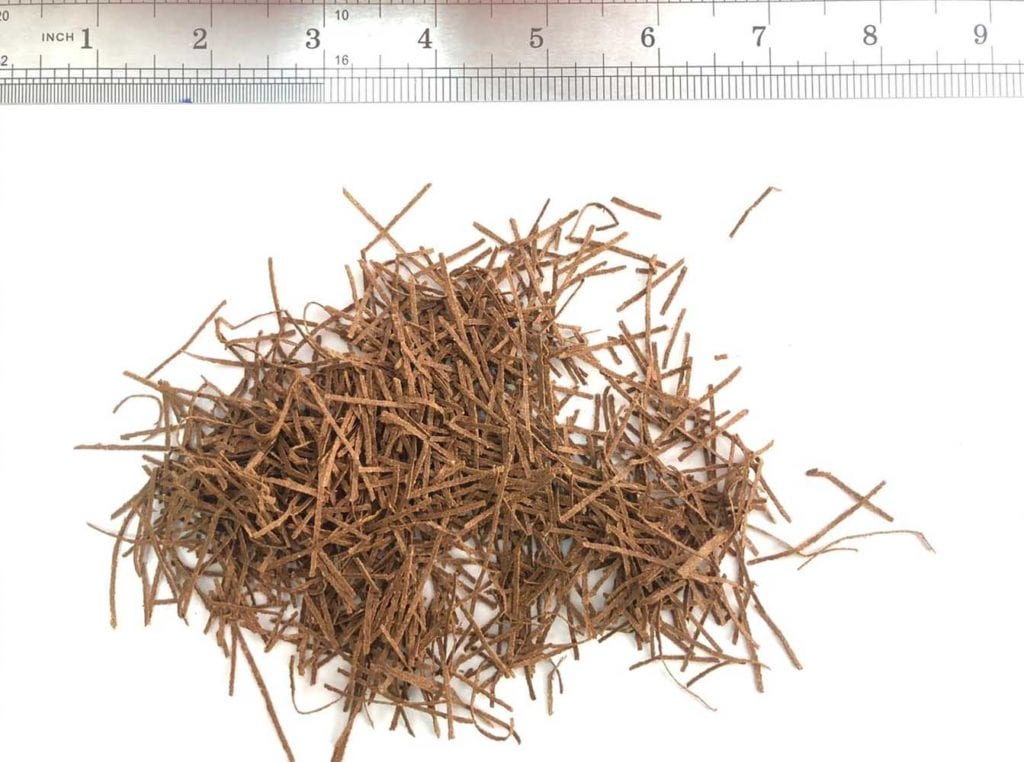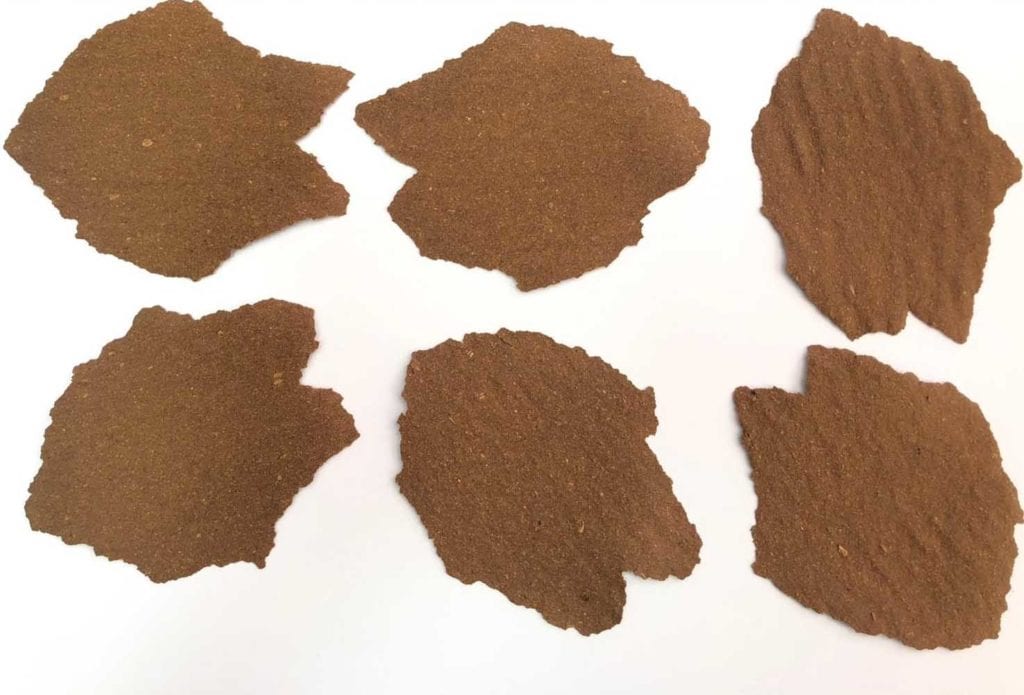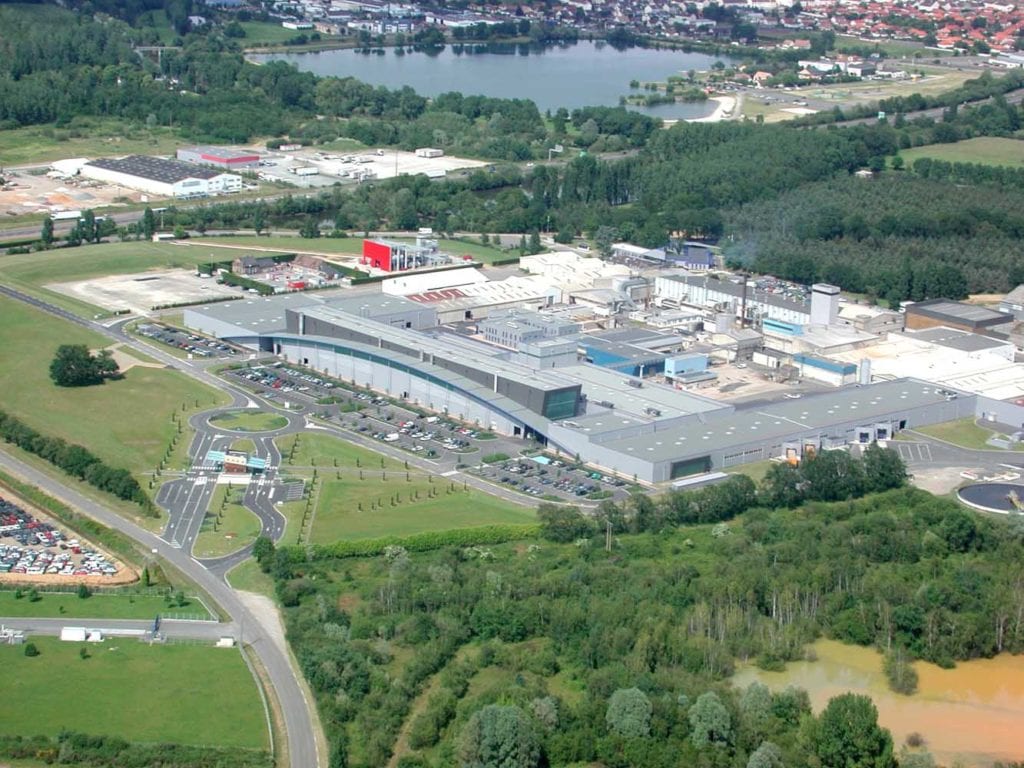Recon Revival
- Also in TR Print Edition
- November 1, 2020
- 0
- 1
- 17 minutes read


New applications are creating new opportunities for reconstituted leaf tobacco.
By Stefanie Rossel
While many industries are still suffering the impact of the Covid-19 crisis, the reconstituted tobacco leaf (RTL) sector has remained largely unaffected. RTL suppliers report positive developments and remain optimistic. Also known as homogenized tobacco or recon, RTL was developed by SWM International (SWM) in the 1950s to save the valuable raw material by combining remnants of virgin tobacco during production. Today RTL is used for a multitude of applications.
In addition to reducing the filling cost of various tobacco product blends and reducing waste, RTL plays a vital role in cigarette blend design. What’s more, a dedicated form of recon, custom-made from carefully blended tobacco leaves, is the essential component of the consumables used in tobacco-heated products (THP).
There are several ways to produce reconstituted tobacco. Next to SWM’s papermaking method, there is the nano fiber technology developed by Star Agritech International (SAI) and a process called band cast, which is also known as slurry-type recon. Each of these types can be used in THP consumables.

Bruno de Veyrac, SWM’s new generation product (NGP) director, says the RTL industry has held its own in the current challenging business environment. “So far, the Covid-19 pandemic has not affected our customers’ recon demand,” he says. “On the contrary, demand remains very strong during this period. We haven’t faced any supply disruption on both product lines conventional and THP. We have had to be creative to keep all our development programs with customers on track. And the global travel restriction makes it challenging to maintain close contact with our customers as we work to develop new products and to promote our product portfolio. We are working on virtual events to overcome this situation and will be sharing details on these events in the coming weeks.”
SAI president and CEO Iqbal Lambat says that his company’s recon sales were impacted as many countries locked down. “This resulted in some of our client’s factories completely shutting down for three to four months. As a result, deliveries were delayed.”
Like de Veyrac, however, he remains optimistic. With global consumption of combustible cigarettes declining for years now, demand for recon was shrinking even before the pandemic. Currently, there is a discrepancy of about 50 percent between global RTL demand and capacity, which SWM estimates at 335,000 tons.
De Veyrac believes demand for recon will grow for several reasons. “First, apart from all multinationals and most tobacco monopolies, recon is not fully understood among small[-sized] and medium-sized companies. These companies represent 10 percent of global production. Second, the price of recon is cheaper than most tobaccos in the world. Having a ‘cheaper’ constituent in the blend with substitution rates of 10 [percent] to 20 percent and higher filling power than tobacco lamina drives better blend cost optimization. Third, with increasing legislation on lowering tar and nicotine levels worldwide, recon addition to the blend is one avenue to achieve this without compromising taste and draw.”
According to de Veyrac, recon can follow a different trajectory from cigarette sales as the inclusion rate can be adjusted upward or downward. “Thus it can offset or amplify the impact of the cigarette market attrition rate,” he explains. “This can vary from one customer to another and from one region to another. For the moment, we have been successful in mitigating the cigarette market attrition impact with our footprint in growing segments like cut rag and by promoting innovative products.”
De Veyrac cites SWM’s Nexfill as a success story. “This tobacco product was developed to deliver added value, such as an improved sensory experience, and allows blenders to substitute some tobacco strips thanks to advantages such as consistency, low degradability and immediate availability,” he says.

Preparing for China
Meanwhile in China, the world’s largest market for combustible cigarettes with 350 million smokers, the excess RTL capacity versus demand remains unchanged, according to Steven Shu, general manager at SWM China. This is despite efforts in recent years to add a higher proportion of recon to cigarette blends, which traditionally have a rather low share of homogenized tobacco.

Since 2014, SWM has a joint venture with the China National Tobacco Corp. (CNTC). “Functional, i.e., flavor sensory, RTL offers added value compared to cost-driven combustible cigarette blends,” Shu points out. “Therefore, the cost-driven RTL has higher share among low-end cigarette brands while the functional RTL has a higher share among medium-to-high-end brands. The key success factor in this market is the unique value offered for cigarette designing and processing. Indeed, the RTL product applications can be extended to cigarette peripheral applications such as cigarette paper, tipping paper and filter media. The commercialization and scale-up of THP products is a unique opportunity to boost overall RTL demand in China.”
Although China manufactures most of the world’s vapor hardware, domestic sales of next-generation products are comparatively small. “China has banned most electronic cigarette categories arguing that electronic cigarettes would take away market share from conventional cigarettes and progressively destroy the livelihoods of millions of farmers and workers employed by the tobacco sector,” Lambat explains. “There are some 30 million people engaged in the tobacco sector in China.”
For THP, no regulation has been implemented yet. According to Tobacco China Online, the CNTC is actively pursuing THPs. By March 2020, there were 852 open patents for THP and 56 patents for THP-related RTL, most of which were owned by the CNTC, the publication found.
“In the field of THP, China tobacco companies have made technological innovations and introduced various heating methods, such as chemical heating, infrared heating or other heating methods, to bypass Philip Morris International [PMI] IQOS’ heating method with a heating blade in order to reduce the possibility of intellectual property disputes with PMI,” says Lambat. “However, there are no THP products commercialized at present in China.”
Shu says that SWM is ready to supply the Chinese THP market as soon as it opens. “We have built a great expertise on THP papermaking recon over the past seven years, and we have the necessary assets to anticipate the THP market start in China. For the moment, CNTCs is conducting some market tests outside China with varied success. Product designs may evolve in the coming months, building on early consumer feedback and the challenging patent environment. Chinese authorities will most probably allow THP product sales in China only when they will be fully ready with the right products.”

Demand on the rise
China left aside, THP demand for RTL has increased remarkably in recent years, according to de Veyrac. “Over the last four years, we have managed to slow the erosion of recon papermaking in the conventional market, and it is now eroding less quickly than the conventional market. Indeed, papermaking recon sales for the THP market have been growing and now represent more than 20 percent of our recon sales. The THP market has shown some volatility, such as in Japan with the plateauing situation observed in 2018–2019, but hopefully the Japanese market is growing again. The launch of THP products in other markets, such as CIS and Europe, supports the global demand of THP papermaking recon, even if the growth rate is smaller than in Japan.”
The recon weight-per-stick on today’s THP consumable is eight times to 15 times that of the conventional cigarette, he explains. “A current THP stick contains 100 percent of recon as opposed to 5 percent to 15 percent in a conventional cigarette. So the growth of THP papermaking recon demand is much faster than the attrition of conventional recon demand.”
SAI selectively supplies recon to THP manufacturers, relates Lambat. “To be forthright, there is only one successful THP product in the world—IQOS,” he says. “There are many companies looking at the segment, but none have been remotely successful. Initially launched in 2014 in Nagoya, Japan, and Milan, Italy, IQOS is being gradually rolled out to other countries. As of October 2019, I have been informed that IQOS is available in 49 countries. However, I am equally informed that as much as 90 percent of all IQOS sales take place in a single country—Japan.”
Last year, SAI developed a THP device and tobacco sticks with its Chinese partner, Global Leaf. The design of the product, named XGen, however, was changed into a Juul-like vaping device in light of Juul’s promising development. “Our foray into XGen in the test market of South Africa has been highly successful apart from the lockdown—i.e., total smoking ban—period [of] April to August.”

All eyes on IQOS
Many expect the U.S. to become the next major market for IQOS. Following premarket approval by the Food and Drug Administration (FDA), PMI launched the product in select markets in 2019. In July 2020, the FDA granted PMI “exposure modification” orders for IQOS, allowing the company to tell consumers that the product releases fewer harmful chemicals than a combustible cigarette.
Initial growth has been slow and has likely been impacted by the Covid-19 pandemic, according to de Veyrac. PMI is vertically integrating for recon supply, he adds, so this is unlikely to impact the supply-demand balance. “However, the significant step of FDA recognition of IQOS as a ‘reduced exposure product’ is very positive for this segment,” he says.
Another development that might bring new opportunities for the RTL sector has not materialized yet. The FDA intends to restrict the amount of nicotine in cigarettes and other tobacco products to make them “minimally addictive.” To date, however, the agency has taken no action to achieve this goal. “Should this legislation pass, then the opportunity for recon will be significant in the USA as well as internationally as other countries follow a USA-copycat approach,” says Lambat.
“We believe that papermaking recon is a strategic tool for the reduction of tar in general and nicotine in particular,” de Veyrac explains. “The challenge will be to reduce the nicotine while maintaining an acceptable taste, but we can also consider blending some botanicals, which will deliver natural flavors without adding nicotine. We are working on this topic with cigarette manufacturers in this region. In parallel, our experience with THP helps as papermaking recon in this environment plays a central role for taste generation and nicotine regulation. Moreover, we have found that in this new field there is no limitation on the percentage of recon in a blend. It is very difficult to predict the impact on recon sales of this type of maximum nicotine rule as we do not know what thresholds will be set or where and when they will be applied. Nevertheless, we do not see a shortfall of capacity even in this region.”

 Opportunities ahead
Opportunities ahead
SWM diversified from tobacco in 2013, complementing its traditional tobacco and paper business now part of its Engineered Papers unit, with a second business unit, Advanced Materials & Structures, which specializes in resin-based materials for a variety of industries and applications. RTL, however, continues to play an essential role.
De Veyrac believes that papermaking recon capacity will remain higher than demand for the foreseeable future. “I see this as a great opportunity for developing new recon utilization in various product lines,” he says. “THP is one, and we believe that new platforms will be launched in the near future which are not cigarette-like, and papermaking recon will remain the major active component to generate the aerosol and transfer the natural nicotine and taste contained in the original tobacco. We also see that papermaking recon is still attractive to conventional cigarettes and OTP products, such as shisha, RYO or snus. The change and volatility of some markets and the pressure on some crops due to geopolitical or weather effects provide some uncertainty on the balance between the tobacco supply and demand and give more incentive to balance risk on blend structure. Papermaking recon is a sustainable product with permanent availability and short lead-time delivery. In addition, the high control and standard of those next-generation products will be maintained and even reinforced. An industrial process such as papermaking will ensure that those standards are fully respected, which is critical for our customers.”
SWM has also used its expertise in the papermaking process to explore another promising business category: Through its LeafLAB botanical-based product platform, SWM produces hemp “recon,” a malleable sheet from hemp leaf and flower biomass that allows for custom-made blending (see “Recon Mission: Hemp,” page xx).
SAI has chosen a different road, diversifying within the field of tobacco. According to Lambat, the company is on its way to transform itself from being a trader to being a producer. It therefore has invested heavily in derivatives. Among other things, it runs two recon factories.
“In the past 12 months, we have had a full year of ownership and management of our nano fiber recon plant in Santa Cruz, Brazil,” says Lambat. “The Brazilian senior management team has further perfected the manufacturing line and increased the plant’s output by 25 percent through efficiency generated modifications. Our full capacity of 3,000 tons per annum is fully booked. This line produces both Virginia and American blend recon,” says Lambat.
SAI has created a team to focus on capacity expansion. “This will consist of establishing a brand-new nano fiber recon plant with a target capacity output of 6,000 tons per annum. This will be housed in a new, dedicated building in Santa Cruz and will bring together our leaf trading team under one roof. We expect the new Brazil plant to be operational in the second half of 2021. The current recon line in Brazil will be deployed to Asia, and the selection of country is not yet decided, but Malaysia and South Korea are high up on the selection list. The capacity of Brazil, Asia and South Africa will exceed 12,000 tons per annum.”
The company broke new ground when it opened a recon line in Surabaya, Indonesia, in June 2019 that is devoted exclusively to the clove-flavored kretek sector. “In Indonesia, our recon plant in Java is now serving multiple clients with multinational and local manufacturers,” says Lambat. “It has also started exporting to the Philippines, Malaysia and Australia. The main service in Indonesia is toll production of clients’ kretek waste to kretek recon. We are evaluating establishing a recon line in southern Africa, most likely producing band cast as it is simpler to produce than nano fiber. And finally, we are evaluating an RTL line in Europe that will focus on the production of recon for cigar wrapper and binder in machine-made cigars. Both projects are slated for implementation in 2021.”
SWM is also considering such options.



